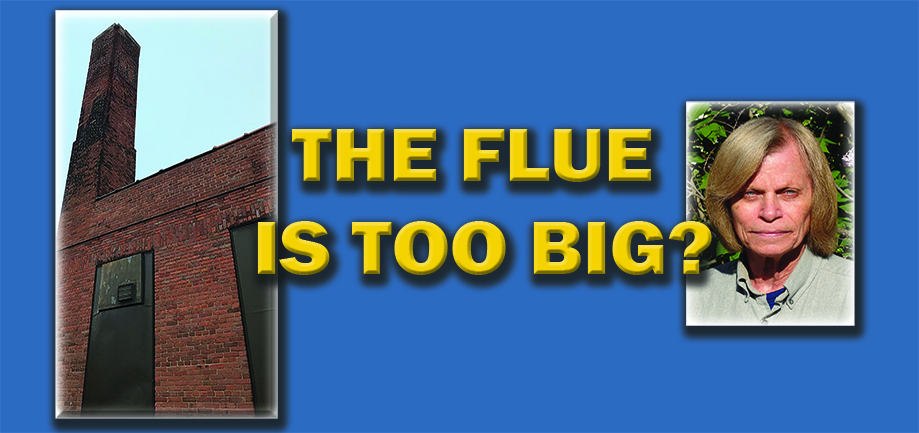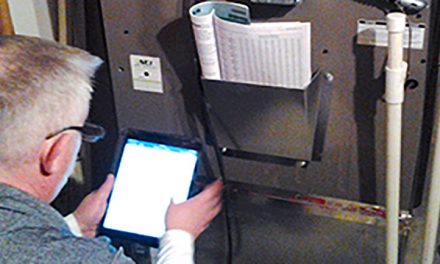In the case of venting, this force is draft. The draft is created by the pressure difference of indoors versus outdoors and the temperature difference of the flue gases versus outdoor temperature.
To maximize this flow, ducts and pipes you size them to create the least amount of resistance.
In the case of larger flues, they create less resistance, less contact of the gases with the flue surface, and this minimizes the possibility of heat transfer from the gases to the flue.
By keeping flue gases hotter, condensation should not be an issue.
I am not recommending oversized flues as the best choice. I am recommending we understand that making flues smaller rarely fixes a venting problem.

Heating a Big Flue?
I do not know who started the rumor that flues need to be heated or are too big. If that were the case, the one pictured in this article would never work.
The rumor most likely started in the 1980s when the industry first introduced induced draft equipment. Rather than blaming equipment operation for condensation in the flue, theindustry blamed the flue.
New venting tables were developed by Battelle Institute and what used to be known as GAMA (AHRI today) using a computer program, to address this problem. This solved very little and tended to be more of a bandage than a fix.
Flues are not heat exchangers. If it is absorbing heat from flue gases, the chances for condensation to occur greatly increase. This is why National Comfort Institute (NCI), spends a lot of time discussing venting and flue function.
So What Does A Flue Actually Do?
A question rarely answered correctly by new students is, ‘What is the function of a flue?’
The most common wrong answer is to vent the flue gases. However, venting is the function of draft. The function of a flue is to communicate or connect inside pressure and temperature with outside pressure and temperature.
The next time you hear someone say they are having a problem because the flue is too big, someone is making a bad diagnosis. The equipment or the building is at fault, not the flue!













Working on a large old home in Santa Ana where someone converted the gravity furnace in the basement to five 50,000 BTU, 80% AFUE furnaces that served different parts of the home. All the furnaces had approximately 20 inches of single-wall venting and all connected to one 10-in. b-vent through the three-story house.
When only one of the furnaces turned on, the combustion gases cooled off so much so that those units that were not running were venting backward, through the induced draft motors, into the basement area.
I did not fix it as the homeowners did not believe it was a problem. Not even the dead cat could convince them that there was a problem. In this case, the vent not sealed properly (four furnaces with venting open to the unheated basement), and 20 feet of single-wall vent I believe were the problem.
If air is coming down the flue fast enough to make the inducers on the idle furnaces spin backward, then it is not the flue gases. It is outside air being drawn in from negative pressure or house leakage.
It is a fact that when the furnaces first come on the inducer will pre-purge for 15 to 30 seconds. This will cause a positive pressure in the flue and blow out the other furnaces. After the burner lights, it should only take a minute or so for the flue to become negative and the gases to flow up. If not, then there is a negative pressure problem.